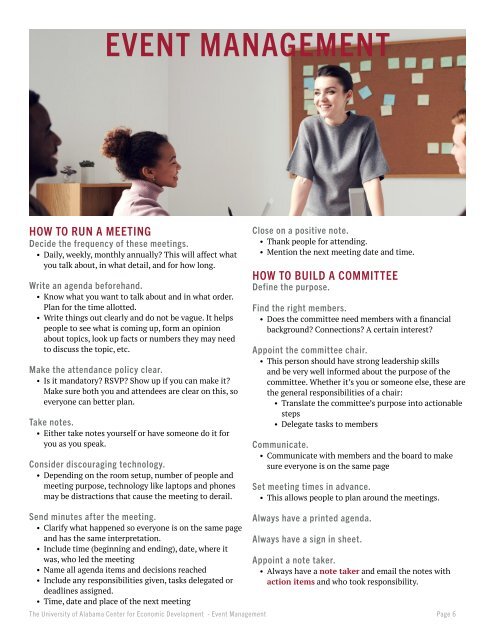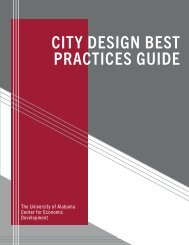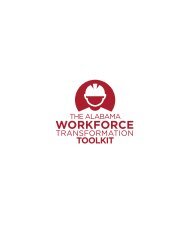You also want an ePaper? Increase the reach of your titles
YUMPU automatically turns print PDFs into web optimized ePapers that Google loves.
EVENT MANAGEMENT<br />
HOW TO RUN A MEETING<br />
Decide the frequency of these meetings.<br />
• Daily, weekly, monthly annually? This will affect what<br />
you talk about, in what detail, and for how long.<br />
Write an agenda beforehand.<br />
• Know what you want to talk about and in what order.<br />
Plan for the time allotted.<br />
• Write things out clearly and do not be vague. It helps<br />
people to see what is coming up, form an opinion<br />
about topics, look up facts or numbers they may need<br />
to discuss the topic, etc.<br />
Make the attendance policy clear.<br />
• Is it mandatory? RSVP? Show up if you can make it?<br />
Make sure both you and attendees are clear on this, so<br />
everyone can better plan.<br />
Take notes.<br />
• Either take notes yourself or have someone do it for<br />
you as you speak.<br />
Consider discouraging technology.<br />
• Depending on the room setup, number of people and<br />
meeting purpose, technology like laptops and phones<br />
may be distractions that cause the meeting to derail.<br />
Close on a positive note.<br />
• Thank people for attending.<br />
• Mention the next meeting date and time.<br />
HOW TO BUILD A COMMITTEE<br />
Define the purpose.<br />
Find the right members.<br />
• Does the committee need members with a financial<br />
background? Connections? A certain interest?<br />
Appoint the committee chair.<br />
• This person should have strong leadership skills<br />
and be very well informed about the purpose of the<br />
committee. Whether it’s you or someone else, these are<br />
the general responsibilities of a chair:<br />
• Translate the committee’s purpose into actionable<br />
steps<br />
• Delegate tasks to members<br />
Communicate.<br />
• Communicate with members and the board to make<br />
sure everyone is on the same page<br />
Set meeting times in advance.<br />
• This allows people to plan around the meetings.<br />
Send minutes after the meeting.<br />
• Clarify what happened so everyone is on the same page<br />
and has the same interpretation.<br />
• Include time (beginning and ending), date, where it<br />
was, who led the meeting<br />
• Name all agenda items and decisions reached<br />
• Include any responsibilities given, tasks delegated or<br />
deadlines assigned.<br />
• Time, date and place of the next meeting<br />
Always have a printed agenda.<br />
Always have a sign in sheet.<br />
Appoint a note taker.<br />
• Always have a note taker and email the notes with<br />
action items and who took responsibility.<br />
The University of Alabama Center for Economic Development - <strong>Event</strong> <strong>Management</strong> Page 6
















